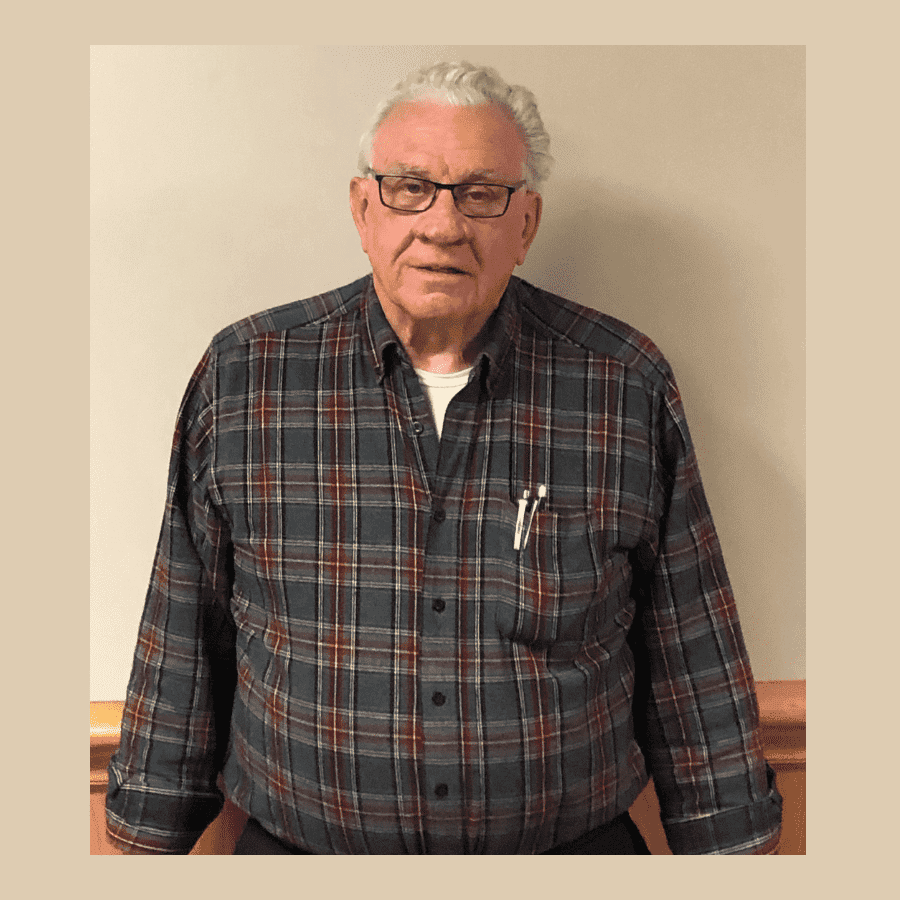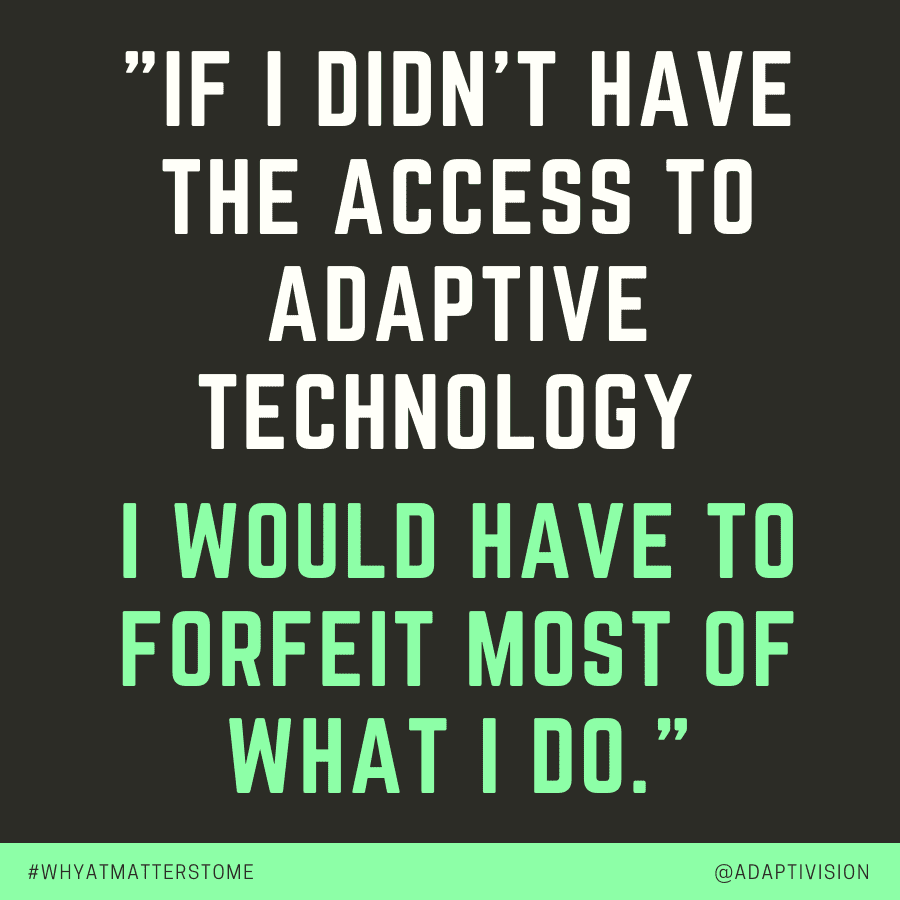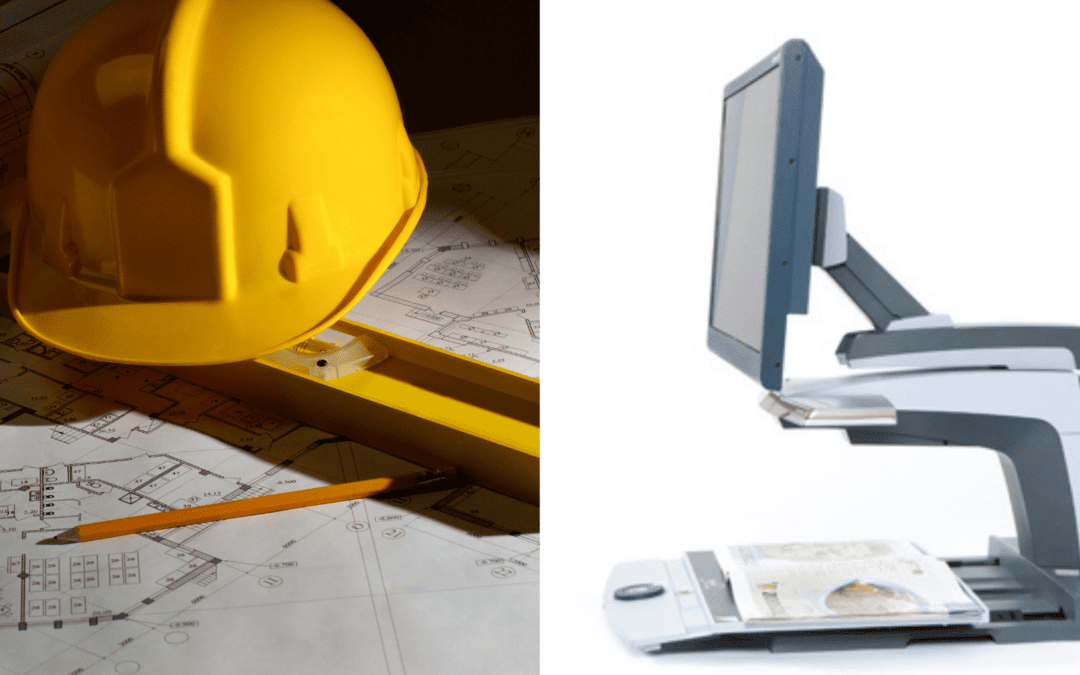We are excited to launch our new interview series, “Why AT (Assistive Technology) Matters to Me.” In our first interview, Mr. Bernie McGee discusses how assistive technology has helped him build a successful career while navigating vision loss.

Bernie McGee
Career path

“I enjoy my work and that is why the equipment, service and good relationship that I receive from AdaptiVision is so important and appreciated.”
— Bernie McGee
Mr. McGee found his start in the Building Mechanical Trade, completing a full apprentice program, becoming a licensed mechanic, and working in commercial and industrial building construction. He began specializing in the medical field, mostly in hospital projects. After twenty years, Bernie decided to launch his own contracting business, which he has since built up across multiple states, employing between 25-35 team members. He is a licensed Master Plumber, Master Electrician, Oil Burner Mechanic, Propane Gas Mechanic and a Certified Class 1-B Public Water System Operator, as well as an Air Conditioning and Refrigeration Mechanic. Bernie also serves as the Health Officer and Health and Safety Compliance Officer in his Vermont hometown. This summer will mark 62 years since the start of his career in the building and construction trade.
Vision loss
Bernie was diagnosed with glaucoma during a routine eye exam over 30 years ago. Until his diagnosis and subsequent disease progression, he had enjoyed excellent vision. Initially, doctors prescribed eye drops to lower the pressure in his eyes. When drops were no longer effective, Bernie underwent eye surgery. He did everything possible to preserve his eyesight: wearing glasses, enduring multiple surgeries, and remaining under the close supervision of his doctors. But, despite his best efforts, Bernie’s vision was deteriorating.

Source: bennetteyeinstitute.com
First steps
On his doctor’s recommendation, Bernie reached out to the Vermont Association for the Blind for help. With support from the organization, Bernie was able to keep going: continuing to work, earn a living, and take care of himself. He also began to learn how to use assistive technology to pursue his goals and regain his independence.
Why assistive technology matters

Bernie is now using 6 different assistive technology products, including desktop and portable video magnifiers, all provided by AdaptiVision. Some of the equipment was obtained through the Association for the Blind, and some Bernie purchased from AdaptiVision directly.
“The patience, guidance, leadership and equipment provided by AdaptiVision have allowed me to . . . continue to be productive in many ways, in spite of my very poor vision now.”
— Bernie McGee
Through the years, Bernie’s work has evolved alongside advancements in adaptive technology. New technology has empowered him to work more efficiently and broaden his scope. He uses technology daily for tasks such as:
- Reading documents, including blueprints and project specs
- Reading & responding to letters, emails and other correspondence
- Other job responsibilities, including highly-detailed work such as product fabrication and installations

“If I didn’t have the access to adaptive technology I would have to forfeit most of what I do.”— Bernie McGee
Assistive technology in daily life
We asked Bernie to describe what a typical day looks like for him. It is clear that he thoroughly enjoys his work and relies on assistive technology to thrive in business.
Typical Workday Timeline Infographic
Wisdom gained, wisdom shared
Through every challenge comes wisdom, understanding, and empathy for those facing similar struggles. We asked Bernie what advice he would give to someone newly experiencing vision loss. He said,
“I would first try to convince them that the world is not coming to an end and neither is their world coming to an end. I would tell them to keep the faith, that there are many people, mentors, organizations, programs and equipment suppliers such as AdaptiVision that are ever so willing to help you.”
— Bernie McGee
Drawing from his own experience, Bernie encourages other people facing vision loss to contact their state’s Division for the Blind and Visually Impaired or Association for the Blind and Visually Impaired for support. He also stresses the importance of maintaining a good relationship with a trusted equipment supplier for visual aids and other assistive technology. Most of all, he wants people to know that they can still live a happy and productive life.
Bernie credits AdaptiVision President, Stu Flom, and the VT Association for the Blind for his success in adapting to life with low vision. While we are deeply grateful for his vote of confidence in AdaptiVision, we know that Bernie’s success is evidence of his courage and commitment to maintaining his independence. He is certainly an excellent role model for others navigating vision loss.













